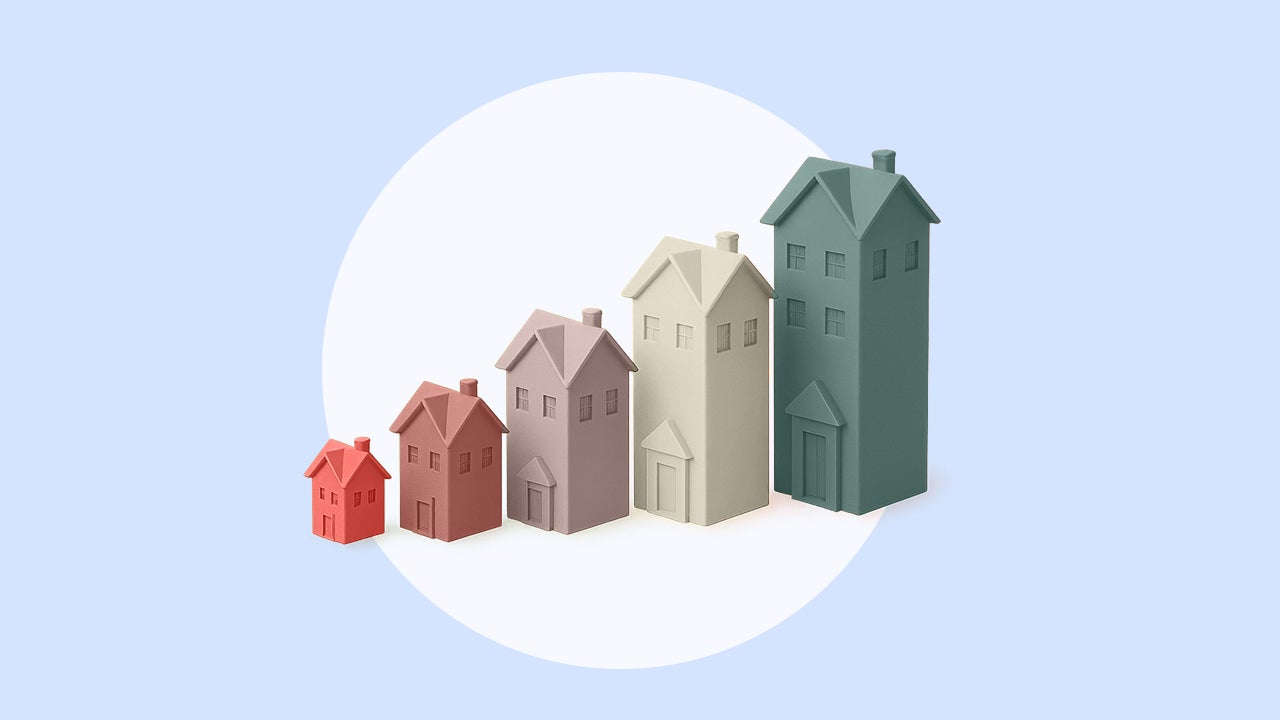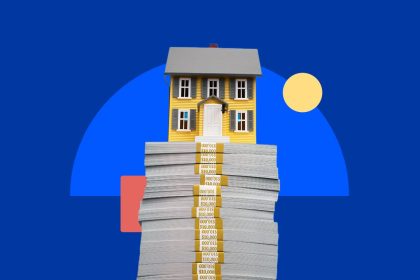Key takeaways
- Nearly every corner of the country has experienced a surge in home equity since 2020, but homeowners in certain states have experienced more gains than others.
- West Virginia registered the largest percentage increase in average home equity, rising 450%, while Washington D.C. had the sharpest decline in average home equity, dropping 38%.
- Southern and Midwestern states have generally seen the greatest average home equity growth, while Western states have posted some of the least.
- From 2020 to 2025, average home equity has increased 142% nationwide. Collectively, tappable equity among mortgage-holders is $11.5 trillion, the highest in five years.
Home equity rises, but homeowners reap varying rewards
If you bought a home back in 2020, congrats: You are probably sitting on a seriously valuable asset right now. Thanks to sky-high home prices and low pandemic-era mortgage rates, homeowners have seen their equity – their home’s value, minus its mortgage balance – skyrocket over the last five years. On average, home equity has grown an impressive 142 percent nationwide since 2020, with a 4.2 percent increase just in the past year, Bankrate’s new study finds.
But not all states have benefited identically from the boom. Real estate markets vary greatly from region to region. So Bankrate went beyond the national average to the state level, to identify where average home equity gains have been the biggest — and the smallest.
For its analysis, Bankrate estimated the amount of average equity growth by comparing average home values and average mortgage balances across all 50 states, as well as Washington D.C., using Q1 2025 data from Zillow and Experian. Important note: This data only reflects mortgage-holding homeowners, including those with a primary mortgage, any second mortgages (home equity loans) and any home equity lines of credit (HELOCs). It does not include homeowners with a paid-off home/zero mortgage balance, since data wasn’t available for them.
Long story short: Since 2020, in certain parts of the country, homeownership has paid off dramatically more than in other parts. In a few places, it’s even been a losing proposition.
Where has home equity grown the most?
In the last five years, average home equity stakes have increased just about everywhere. But it’s increased in some states more than others – and even decreased in a few. Here are the five where homeownership has paid off the most, and the five where it’s paid off the least.
| Biggest gainers in average home equity | Smallest gainers in average home equity |
|---|---|
| West Virginia (450%*) | 1. District of Columbia (-38%) |
| Oklahoma (431%) | 2. Louisiana (-22%) |
| Connecticut (297%) | 3. Alaska (17%) |
| Kansas (234%) | 4. North Dakota (19%) |
| Illinois (217%) | 5. Colorado (48%) |
| *% change since 2020 | |
While home equity has grown in most areas in the U.S. since 2020, our analysis shows that growth has been greater in the South and Midwest than in the West (with some notable exceptions, like Louisiana and Texas). Five of the 10 states with the least equity growth are Western states, which feature home values growing slower than the national average (other than Utah) and larger debt sums than the national average.
States with the most home equity growth
More than two dozen states throughout the U.S.have recorded triple-digit increases in home equity in the past five years. But Southern and Midwestern homeowners have seen the biggest percentage gains: Nine out of the 10 states with the most equity growth since 2020 occupy one of those regions. Here’s a closer look at the top five.
1. West Virginia
- 5-year % change in average home equity: +450%
- Average home equity (2020): $6,529
- Average home equity (2025): $35,931
Mountain State homeowners are reaching new heights in home equity gains: The average home equity stake has more than quadrupled since 2020. The substantial gains reflect in part the fact that West Virginia has the lowest home prices nationwide, averaging $171,861.
2. Oklahoma
- 5-year % change in average home equity: +431%
- Average home equity (2020): $8,766
- Average home equity (2025): $46,562
Oklahoma takes the number two spot for equity growth in the last five years, the only other state with a gain over 400 percent. Not only are mortgage balances ($170,580) well below the national average, but the Sooner state also has some of the most affordable home prices ($217,142) in the country, ranking the fourth-lowest for average home values.
3. Connecticut
- 5-year % change in average home equity: +297%
- Average home equity (2020): $41,959
- Average home equity (2025): $166,656
The sole Northeastern state in the top five, Connecticut has had a near 300 percent gain in equity over five years. Although the state has the highest home prices ($426,752) and the highest mortgage debt ($260,096) as of the first quarter of 2025, price growth still translated into significant equity increases.
4. Kansas
- 5-year % change in average home equity: +234%
- Average home equity (2020): $20,471
- Average home equity (2025): $68,385
One of two Midwestern states to make the top five, Kansas experienced the second-largest increase in home values nationwide from 2020 to 2025. Average mortgage debt in 2025 was $173,204, 33 percent lower than the national average.
5. Illinois
- 5-year % change in average home equity: +217%
- Average home equity (2020): $25,533
- Average home equity (2025): $80,837
Illinois rounds out the top five, posting an estimated home equity growth rate of 217 percent between 2020 and 2025. While its 38 percent rise in home prices is the slowest among the top five, steady growth still delivered a solid equity payoff for Prairie State homeowners.
Average equity gains in dollar amounts
Percentage gains are not the same as dollar gains. If we look at average home equity increases in terms of cash since 2020, a different set of states leads the pack.
Over the five-year period, Hawaii ($167,791), New Hampshire ($158,684), California ($153,843), New Jersey ($148,791) and Massachusetts ($148,735) experienced the largest dollar increases in average home equity. Because these states already had high equity to begin with, their percentage gains were smaller (62 to 136 percent) compared to Southern and Midwestern states.
States with the least home equity growth
Home equity has surged in much of the country since 2020, but not every state is participating equally in the party. Most notably, five of the 10 states with the least home equity growth on average in the last five years are Western states (Alaska, Colorado, Hawaii, Oregon and Utah), where mortgage debt is higher and home price growth is slower than the national average. Here’s a closer look at the bottom five.
1. District of Columbia
- 5-year % change in home equity: -38%
- Average home equity (2020): $172,628
- Average home equity (2025): $106,606
At the bottom of the list is Washington D.C., with a 38 percent decrease in estimated home equity in the last five years. Despite having the highest average home prices of the five regions with the least equity growth ($617,355), home values have increased only 2.8 percent since 2020, the lowest rate studywide. The District of Columbia is also the only East Coast market in the bottom 10.
2. Louisiana
- 5-year % change in home equity: -22%
- Average home equity (2020): $40,365
- Average home equity (2025): $31,492
The good times aren’t rollin’ in Louisiana. Since 2020, it’s the only market besides D.C. where average home equity has dropped, down 22 percent over five years. Slower home price growth, climbing insurance costs and growing climate risks/extreme weather incidents are likely to blame for the decline.
3. Alaska
- 5-year % change in home equity: +17%
- Average home equity (2020): $90,469
- Average home equity (2025): $106,288
Alaska is one of two Western states in the bottom five with the least average equity growth since 2020, with gains of only 17 percent. High mortgage balances and slower home price appreciation have frozen equity growth for many homeowners across the state.
4. North Dakota
- 5-year % change in home equity: +19%
- Average home equity (2020): $66,721
- Average home equity (2025): $79,511
The only Midwestern state to rank among the bottom five states is North Dakota, with an equity growth rate of 19 percent in the last five years. It’s worth noting, though, the Roughrider State has shown signs of a rebound recently, with a 19.7 percent equity increase from 2024 to 2025 alone.
5. Colorado
- 5-year % change in home equity: +48%
- Average home equity (2020): $147,133
- Average home equity (2025): $218,008
Rounding out the bottom five is Colorado, with an estimated five-year home equity growth rate of 48 percent and an average equity stake of $218,008, more than double those of the other four on the least-gainer list. Colorado’s five-year equity growth rate also reflects slower home value increases than the national average.
Changes in home equity by state
What’s behind the rise in home equity?
Think of home equity as the part of your home that you own outright: It’s the difference between your home’s market value and what you still owe on your mortgage. As you chip away at your mortgage balance, your equity grows. It also rises with an increase in home prices and property values.
That’s exactly what’s happened across much of the U.S. since 2020. The total value of mortgaged homes nationwide has risen fast, by over $10 trillion in the last five years – much faster than mortgage debt, according to property data analyst ICE Mortgage Technology. As a result, tappable equity is at its highest level in five years. That’s the amount homeowners can access while still maintaining a 20 percent stake in their homes, as most lenders require.
Why is home equity growth significant for homeowners?
The growth in home equity has been a big boost to many a family’s bottom line, since residential real estate is usually the single largest asset people have. Growth in home equity means bigger profits when selling your home and more flexibility when purchasing a new one. It can also provide borrowing power in the form of a home equity loan or a home equity line of credit (HELOC) to pay for renovations, consolidate debt or be a financial cushion for emergencies. About a quarter of homeowners are considering using one of these tools in the next year, according to the ICE “2025 Borrower Insights Survey,” due to their long terms and relatively low interest rates.
So, home equity is more than just a number. It’s a significant asset. When it grows, it increases your wealth, becoming a powerful financial tool that can bring you one step closer to achieving plans and goals, or creating a nest egg for the next generation.
-
To estimate where home equity has grown the most and least in the U.S. in the last five years (from 2020 to 2025) on a percentage basis, Bankrate analyzed typical home prices against the average mortgage balances in all 50 states and the District of Columbia. Average home equity estimates reflect homeowners who have a mortgage, as the mortgage balance data did not include homeowners with paid-off mortgages. Bankrate’s ranking is an estimate of home equity in each state based on:
- Zillow’s typical home prices by state, which reflect homeowners who have mortgages and own 100 percent of their homes. These figures reflect all home types, including single-family and multifamily homes. Zillow’s data measures the typical value for homes within the 65th to 95th percentile range for a given state as of Q1 2025.
- Experian’s average mortgage balances by state reflect the average mortgage debt of homeowners with a non-zero balance. Experian mortgage balance data reflects balances for all home types, including single-family and multifamily homes. The mortgage balances could include multiple liens, such as first mortgages, second mortgages and home equity lines of credit, as of Q1 2025.
Why we ask for feedback
Your feedback helps us improve our content and services. It takes less than a minute to
complete.
Your responses are anonymous and will only be used for improving our website.
Help us improve our content
Read the full article here
















